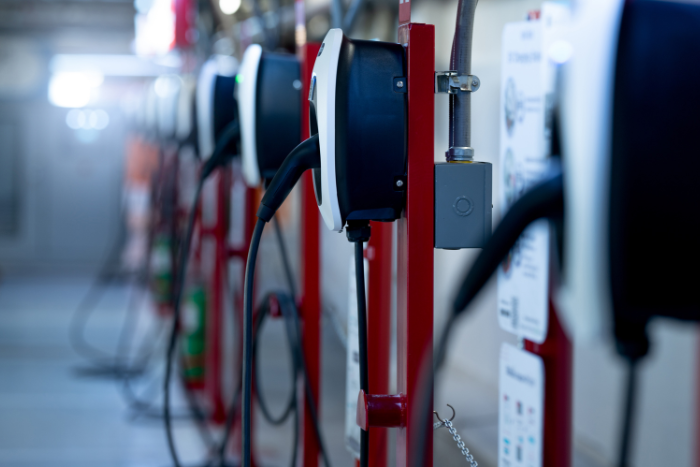By 2030, the Indian market for electric vehicles (EVs) is expected to grow to a value of $48.6 billion, according to a recent analysis published in the Economic Times. The analysis said that there will be approximately 50 million EVs on the country’s roads by then. India will need to deploy more than 400,000 chargers a year, or 1.32 million chargers by 2030, to meet this demand. The swift proliferation of public Battery Electric Vehicle (BEV) charging stations, which surged by nearly nine times from 1,800 in February 2022 to 16,347 in March 2024, is the primary driver of this boom. The Ministry of Heavy Industries has authorised 1,576 EV charging stations on 16 highways and 9 expressways, as well as 2,877 EV charging stations spread across several states. Because 2Ws and 3Ws are so common, India’s charging infrastructure has special requirements because they mostly rely on AC slow charging and battery switching. 4Ws and buses, on the other hand, need a combination of AC and DC charging options. For private 2Ws and 4Ws, home and workplace charging is anticipated to be predominant, whereas commercial fleets will depend on public charging networks or private depots.
Amazon India partners with Gentari to deploy three-wheeler EVs for deliveries
Gentari Green Mobility India and Amazon India have partnered to use more three-wheeler EVs now for Amazon deliveries. In order to increase the adoption of electric vehicles (EVs) in its operations in more than 400 Indian cities, Amazon has partnered with manufacturers, DSPs, charging point operators, and financing firms for the past 10 years. By 2025, Amazon wants to have 10,000 EVs in its fleet of delivery vehicles in India, 7,200 EVs have been installed thus far till 2023. Over the following three years, Gentari plans to purchase and distribute EVs throughout major Indian cities. Amazon fleet operators will have access to a network of public chargers, business credits, and enhanced fleet management through telematics support with Gentari Go.
US tops in climate-tech funding, surpasses China
The US has overtaken China as the global leader in climate-tech finance in the first half of this year, despite a decline in the total amount invested, according to a recent BloombergNEF research. US companies raised $6.7 billion, compared to $9.8 billion in 2023’s first half-year. This still surpassed investments made in China—where climate-tech companies raised $5.1 billion in the first half of 2024, down from $14.5 billion in the same time last year. Significant effects on investment have been shown from US climate policies, especially the Inflation Reduction Act. Investor trust in these businesses has been bolstered by generous tax credits for technologies like carbon capture, hydrogen, and batteries, as well as grants and loans from the US Energy Department. China, currently the second-largest market for climate-tech businesses, is falling behind due to issues with overcapacity. Canada comes in third, having invested $1.8 billion in the first half of the year. The sector received $22 billion in global capital, an almost 50% decrease from the same period the previous year.
Engineering firm unveils gel lead-acid battery for safer residential operation
A new battery intended for residential usage has been introduced by SS4U, a new venture from parent company TSS4U, an engineering firm and off-grid solar specialist from the Netherlands. The newly created gel lead-acid batteries have no such thermal runaway or fire risk and function between -40°C and 55°C, surpassing lithium iron phosphate (LFP) batteries at both the low and high end. The battery is a gel lead-acid implementation with an integrated charging system that maximises performance and longevity. The system’s primary drawback is its weight of 550 kg, even though it has a 17.6 kWh energy storage capacity and can discharge at 2.4 kW and charge at 2 kW. This is heavy in comparison to a typical household battery that uses LFP chemistry and weighs 130 kg and stores 13.5 kWh. Around 50% of the materials used to make the batteries with this fire-safe technology are recycled, and 95% of the house battery can be recycled when it comes to the end of its useful life.
Antimony next in China’s plans to limit critical mineral export
China will restrict the amount of antimony and related elements that can be exported, citing reasons of national security, the Reuters reported. Antimony is a strategic metal utilised in military applications like ammunition, infrared missiles, nuclear bombs, night vision goggles, batteries, and photovoltaic equipment. This is the most recent action taken by Beijing to limit exports of critical minerals, of which it is the main provider. Last year, 48% of the world’s antimony mined output came from China. The nation stated that the limitations were put in place to protect its interests and national security as well as to uphold its international commitments to refrain from proliferation. The restrictions were not aimed at any particular nation or area, China added.
Tata Electronics begins constructing ₹27,000-crore chip assembly plant in Assam
Tata Electronics started building its ₹27,000-crore chip assembly plant in Assam and it is anticipated to go online the following year, reported the Economic Times. The chips will be utilised by organisations that provide network infrastructure and communication, as well as by automobiles, especially electric vehicles. The factory will produce 4.83 crore chips daily and will employ 27,000 people at full capacity, including 12,000 indirect jobs in addition to 15,000 direct positions. In February of this year, the Union Cabinet gave its approval to the initiative. According to the company, all three of the primary technologies that will be used in this plant are developed in India.

